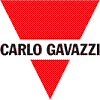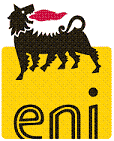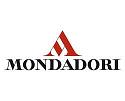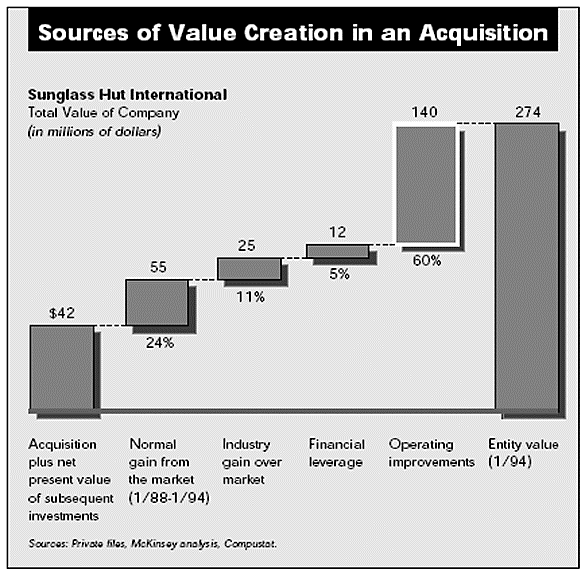Service objectives
The following list represents the Key Service Objectives (KSO) for the Appleton Greene Risk Analysis service.

Legal Assessment
This process involves to: improve the company’s governance system; organize a structured and organic prevention and control aimed at reducing the risk of commission of related crimes business activities, with particular regard to the elimination or reduction any unlawful behavior; determine all those who operate in the name and on behalf of the company in “areas at risk”, the confidence to run in to infringements of the provisions, in an offense punishable by penalties, on legal or administrative nature, not only personally but also in the towards the company. Legal assessment includes the following activities: identification of activities of the business areas exposed to the committee a more offenses (risk analysis); the definition of appropriate procedures for the prevention of offenses (Control protocols) and the effective monitoring of the process operation. Risk Analysis – The risk analysis is done by analyzing business processes in order to identify areas and activities where it is possible to commit the offenses and measuring, for each of them, the level of risk (in terms of “probability” and “impact”). This activity of “risk assessment”, risk assessment, focuses on the corporate structure, the specific business risks and internal regulatory system entity (company procedures). The risks are identified through a structured process of risk assessment (Risk assessment), generally carried out by means of: interviewing managers; workshop with the resources of one or more business functions and surveys. In performing this preliminary analysis assumes a fundamental role the Internal Audit. The Internal Audit is an independent activity and objective assurance and consultancy, aimed at improving the effectiveness and efficiency Organization. We assist the organization in pursuit of its objectives through a systematic professional approach that generates value added since it is aimed at evaluating and improving the control processes, risk management and corporate governance. This function can support the Supervisory Board in the operation of the process verification, checking the design and operation of parking control protocols in place to mitigate the risk of committing crimes.

Risk Evaluation
The objective of risk management is to understand what and how to prevent in relation to possible cases of damage, but also what and how to mitigate in terms of consequences and what to possibly transfer to other entities by means of, for example, appropriate insurance coverage. Identify, analyze, evaluate, communicate, monitor and eliminate the risks associated with any activity, or process in order to make the organization able to minimize losses and maximize opportunities. All this in a perspective of business continuity, that continuity of the production process or service delivery. Elements of the process considered are: setting the context of the risk assessment (identification, analysis, increase) of the risk treatment across which we highlight the following activities: communication and consultation, monitoring and review. Establish the context and politics (external context: social, cultural, political, cogent, financial, technology, internal context: governance, organizational structure, responsibilities, policies, information systems and flows; for risk management policy). Risk Identification (sources of risk, impact areas, events, circumstances, consequences, goal and full list of events that may affect the achievement of objectives). Analysis and risk weight; the analysis (determination of the consequences and attributes as the verisimilitude) provides inputs to the phase weighting, as the level of risk. Increase: comparison between the level of risk and risk criteria. Risk Treatment: deciding not to start or continue activities that result in the onset of risk; hiring or increase the risk in order to pursue an opportunity; remove the source of risk; to change the probability; edit their consequences; share the risk with other / and part / s (including financial control) and to consider the risk by informed decision.

Quality Implementation
The implementation of the management system for quality plans a project of organization and training that must permeate the structure in all its parts, with the objective of defining the processes aimed at continually improving and optimizing the efficiency. The project follows the following steps: Verify the organization and the existing documentation; Definition of quality policy and objectives; Definition and preparation of quality documents; Risk assessment; Audit Verification and Assistance during the Inspection Visit. During the first operation will be carried out a detailed verification of the organizational status and will define the objectives and stakeholders. This phase involves the actual analysis of the organization and the collection of all the existing documentation (possible forms and operating instructions) on the subject of the certification processes. This in order to check the current state of the art and to manage the integration with the quality system that must be implemented and with the documentation to be drawn. At each stage, and especially in the initial phase, it will be essential that the involvement of both the direction of the function managers, coordinated by the consultant, to define what the norm called “quality policy”, namely the objectives that the Company intends to pursue, to meet the needs of customers, external / internal. Risk assessment plans to identify, analyze, evaluate, communicate, monitor and eliminate the risks associated with any activity, or process in order to make the organization able to minimize losses and maximize opportunities. It must necessarily be an ongoing process aimed at improving since, over time, external factors or internal risk may change and should include an estimate of the costs of risk management, in terms of economic resources, capacity and means. The next step in setting the objectives will be to detect processes, responsibilities by assigning specific tasks and responsibilities. In this phase it will be crucial the involvement of both the function Officers that their collaborators, coordinated by a consultant, to obtain maximum involvement and dissemination of the Quality System. In order to verify the correct and full implementation of the quality system set up during the last month of the project, before by the inspection of the chosen certification, it will be carried out thorough auditing activities on all subjects to the certification process.

Environmental Implementation
Initial Environmental Assessment that identifies the significant environmental aspects typical of every company. The Environmental Analysis allows to: Identify the legal requirements applicable to an organization; Identify all environmental aspects with a significant environmental impact; Locate the appropriate criteria for evaluating the environmental impacts; Review all existing management practices and procedures relating to the environment and Evaluate the teaching from the investigation of previous incidents and environmental emergencies. The Environmental Analysis is designed to identify: the direct and indirect aspects (environmental aspect: element of an activity, product or service of an organization that can interact with the environment) and the significant impacts (environmental impact: any change to the environment, whether adverse or beneficial, wholly or partially resulting from activities, products or services of an organization). The Environmental Analysis is the tool that allows the organization to: Acquire a complete knowledge, thorough and documented related environmental aspects of its activities, its products and services; find out what are the most significant environmental aspects and the environmental performance indicators by which to measure the environmental performance; the realization of a control system with instruments such as procedures and control plans; support and assistance in the implementation of the environmental system; monitoring of activities and internal audit for the verification of the proper functioning. A systematic check carried out by the internal audit is to minimize the risks, to provide assurance to stakeholders (shareholders, employees, management, customers) and to define clear priorities for action to achieve compliance, for risk reduction and for the process improvement and periodic definition of improvement plans.

SS Implementation
Occupational Health and Safety Assessment Series allows the business issues related to security management, through the identification of hazards, assessment of risks and their reduction. A continuous improvement plan allows the identification and subsequent implementation of control measures. The consulting services to obtain OHSAS 18001 certification enables you to create an “active prevention” corporate policy that allows you to: Ensure compliance with legal requirements; Ensure the company an advantage in participating in tenders by public or private entities; Reduce workplace accidents both in terms of frequency and in terms of severity and the related costs “indirect”; Reduce the possibility of incurring administrative sanctions and / or criminal proceedings; Reduce image risks from accidents at work; Increase employee motivation and thus the working efficiency; Continuously monitor and verify safe working conditions and Design and implement an integrated system for quality, environment and safety. This process Involves: Definition of the SSL policy; Formulation of a plan for the introduction and development of a SSL management system; Drafting of the full SSL Manual of the procedures required by the regulations; Organization of a registration system; Specific personnel training than is the policy; System implementation and testing agreed through internal audits; Planning and development of corrective measures applications; Selection of the certification and Tiling constant during audits to ensure a technical support to the customer. The benefits derived from it are the bureaucratic / administrative simplifications, decision support in investment operations or technological change, greater protection of company assets and a better image towards its customers.
This service is primarily available to the following industry sectors:

Energy
Due diligence and risk analysis are consulting processes aimed at identifying the possible impacts arising out of activities in the sights. Identify, analyze, evaluate, communicate, monitor and eliminate the risks associated with any activity, or process in order to make the organization able to minimize losses and maximize opportunities. Conserve natural resources and protect the environment is a common concern today among consumers and businesses. In addition, the demand for environmentally friendly fuel continues to grow. For this, the use of alternative fuels such as biomass and biofuels is spreading. These new sources of energy is required to comply with the sustainability requirements. Even for traditional sources, the energy sector is facing a complex technological challenge that will require significant investment in infrastructure. Dynamism, ideas and a strong commitment aimed at sharing economy characterize the ecosystems of these new entrepreneurial projects that decide to operate in the energy sector. Specifically, 88% of startups (392 in total) carries out activities and provides scientific research and development services, while 27 (6%) are concerned with the manufacture of electrical and electronic equipment, 5% (equivalent to 21 initiatives entrepreneurial) operates in the construction of various equipment and machinery. Finally, there are four energy startups (1% of the total) who build and sell motor vehicles, trailers and semi-trailers. Producing energy from renewable energy and efficiency are two of the areas in which they move young companies in the energy sector that are born and work in Italy. Often the services they offer on the market can be integrated with the offer of the largest companies.

Construction
The positive signs, albeit modest, in the economy act still does not involve the construction sector continues to show declines in production levels though more slowly. The estimate made by Ance for 2015 is still a reduction in investment in construction by 1.3% in real terms, after significant declines in previous years (-7% in 2013 and -5.2% in 2014). The number of people employed in construction, after 19 consecutive quarters of declines trend, shows, in the second quarter 2015, an increase of 2.3% on the basis annually. The decline in construction investment in 2015, lower than in previous years, was mitigated by the extension until December 2015 the enhancement of tax incentives for building renovations and for energy efficiency (provided for by the 2015 Stability Law). Added to this are a number of measures relating to public works which, though not enough to reverse the cycle, they mitigate, however, already in 2015, the downturn. Identify, analyze, evaluate, communicate, monitor and eliminate the risks associated with any activity, or process in order to make the organization able to minimize losses and maximize opportunities. An approach extended to business continuity management company that identifies of accident scenarios involving critical business processes, you get to define strategies, organizational controls and emergency measures to be put in place to ensure the level of continuity, set a target. We assist our customers by offering our advice for the development and implementation of business management systems useful to monitor and improve work performance, according to regulations and international standards. We assist our customers by offering our advice for the development and implementation of business management systems useful to monitor and improve work performance, according to regulations and international standards.

Automotive
The automotive industry plays an extremely important role in world economy and the international economy, since it deals with the design, construction and marketing of motor vehicles, used every day around the world. As a result, vacancies in Italy are continuous, endless and very appealing. The automotive sector can be a turning point, both economically and professionally, for those who have decided to make available their skills and their will to contribute personally to the development of an important branch of industry. Salaries, in fact, are very high and working conditions are among the best on the market. Working in the automotive sector, also it can give you great personal satisfaction, because its achievements have great importance both nationally and globally. Innovation and research are important points of the automotive sector, and are also the basis of this type of industry. This is why large companies are always looking for promising young researchers. The working environment in which these professionals work is very interesting and offers many opportunities to make a career, even in a short period; in several large multinationals, in fact, there are various possibilities for placement offered by major car manufacturers. The consulting activity focuses on all areas of risk that are relevant in terms of continuity of production (process risks, risks of utilities, risks from suppliers, risks due to the automation of processes, risks of customers, risks due transport and logistics) and aims to highlight the critical customer scenarios, estimating the consequences. n approach extended to business continuity management company that identifies of accident scenarios involving critical business processes, you get to define strategies, organizational controls and emergency measures to be put in place to ensure the level of continuity set a target.

Oil & Gas
Our global and industry expertise extends on a wide range of sectors. We aim to offer companies advisory services for the development and conduct of due diligence and risk analysis relating to production sites belonging to different industrial sectors (Energy, Construction, Automotive, Oil & Gas and Food & Beverage), commercial activities, as well as disposal sites located throughout the world. Due diligence and risk analysis are consulting processes aimed at identifying the possible impacts arising out of activities in the sights. Identify, analyze, evaluate, communicate, monitor and eliminate the risks associated with any activity, or process in order to make the organization able to minimize losses and maximize opportunities. An approach extended to business continuity management company that identifies of accident scenarios involving critical business processes, you get to define strategies, organizational controls and emergency measures to be put in place to ensure the level of continuity set a target.With increasing global demand for energy and an economic scenario evolving, the oil and gas industry is facing new challenges and opportunities. Our team of specialists provides assistance to companies in the sector in risk management, performance optimization and compliance with the regulatory environment. The consulting activity focuses on all areas of risk that are relevant in terms of continuity of production (process risks, risks of utilities, risks from suppliers, risks due to the automation of processes, risks of customers, risks due transport and logistics) and aims to highlight the critical customer scenarios, estimating the consequences. Our network of professionals engaged in the oil and gas industry, is able to provide support on key issues, including: Risk management in an energy landscape in constant evolution; The M & A activity and investment; Reduction of costs and optimization of processes; The growth of emerging markets and Regulatory updates.

Food & Beverage
This field deals with the processing and transformation of products from primary activities such as agriculture, livestock, forestry and fishing or secondly, the blanks obtained as mentioned, to make finished products to be allocated, in the face of a proper conditioning / packaging, market, and therefore consumer, food. The main activities for this sector are: Standardized series productions; presence of handling systems and automated internal transport; use of machines, or simply by mechanical systems, connected together to form production lines and subdivision of the business in specific tasks such as administration, purchasing, maintenance, operation of plants, control, marketing. We believe that improving the competitiveness of every business goes through process efficiency, training and motivation of staff, the use of effective information systems and the application of shared procedures for the control of all activities. All projects are conducted in order to obtain the customer’s objectives, both in terms of effectiveness and in terms of efficiency. Maintain an effective system of communication with customers, the community and all staff in order to transpose its requirements by informing them about the process of continuous improvement and about the results achieved. Guarantee efficiency in the management and control of operating units through the ability in management control and the systematic control of operating activities and the related costs to the Directorate by providing an effective and timely reporting on operations.
Bronze Service

Monthly cost: USD $1,000.00
Time limit: 5 hours per month
Contract period: 12 months
Bronze service includes:
01. Email support
02. Telephone support
03. Questions & answers
04. Professional advice
05. Communication management

SERVICE DESCRIPTION
The Bronze Client Service (BCS) for Risk Analysis provides clients with an entry level option and enables client contacts to become personally acquainted with Dr. Magnoni over a sustainable period of time. We suggest that clients allocate up to a maximum of 5 Key Employees for this service. Your Key Employees can then contact the consultant via email, whenever they feel that they need specific advice or support in relation to the consultant’s specialist subject. The consultant will also be proactive about opening and maintaining communications with your Key Employees. Your Key Employees can list and number any questions that they would like to ask and they will then receive specific answers to each and every query that they may have. Your Key Employees can then retain these communications on file for future reference. General support inquiries will usually receive replies within 48 hours, but please allow a period of up to 10 business days during busy periods. The Bronze Client Service (BCS) enables your Key Employees to get to know their designated Appleton Greene consultant and to benefit from the consultant’s specialist skills, knowledge and experience.
Silver Service

Monthly cost: USD $2,000.00
Time limit: 10 hours per month
Contract period: 12 months
Bronze service plus
01. Research analysis
02. Management analysis
03. Performance analysis
04. Business process analysis
05. Training analysis

SERVICE DESCRIPTION
The Silver Client Service (SCS) for Risk Analysis provides more time for research and development. If you require Dr. Magnoni to undertake research on your behalf, or on behalf of your Key Employees, then this would understandably require more time and the Silver Client Service (SCS) accommodates this. For example, you may want your consultant to undertake some research into your management, performance, business, or training processes, with a view towards providing an independent analysis and recommendations for improvement. If any research and development, or business analysis is required, then the Silver Client Service (SCS) is for you.
Gold Service

Monthly cost: USD $3,000.00
Time limit: 15 hours per month
Contract period: 12 months
Bronze/Silver service plus
01. Management interviews
02. Evaluation and assessment
03. Performance improvement
04. Business process improvement
05. Management training

SERVICE DESCRIPTION
The Gold Client Service (GCS) for Risk Analysis is intended for more detailed evaluation and assessment, that may require your Key Employees to have monthly meetings or interviews with Dr. Magnoni. These meetings and interviews can be conducted over the telephone, Skype, or by video conference if required. The consultant can also attend your business premises, an Appleton Greene office, or another mutually beneficial location, but please note that clients are responsible for the costs of any disbursements separately, including travel and accommodation. This service enables you to integrate the specific skills, knowledge and experience of your designated consultant into your Key Employee management team. The Gold Client Service (GCS) can also incorporate training workshops, business presentations and external meetings with customers, suppliers, associations, or any other business-related stakeholders.
Platinum Service

Monthly cost: USD $4,000.00
Time limit: 20 hours per month
Contract period: 12 months
Bronze/Silver/Gold service plus
01. Project planning
02. Project development
03. Project implementation
04. Project management
05. Project review

SERVICE DESCRIPTION
The Platinum Client Service (PCS) for Risk Analysis is our flagship service and will be required if you need Dr. Magnoni to facilitate the planning, development, implementation, management, or review of a particular project relating to his specialist subject, which would obviously require more time and dedication. This service enables you to reserve up to 12.5% of the consultant’s working month and provides a more hands-on service as and when required. If you need more time than this, then this can always be arranged, subject of course to the consultant’s ongoing availability. The benefit of having an external consultant involved in projects is they provide an independent perspective and are not influenced by internal politics, day-to-day responsibilities, or personal career interest. They provide objectivity, specific knowledge, skills and experience and will be entirely focused upon the tasks at hand. The Platinum Client Service (PCS) will provide your organization with a valuable resource as and when you need it.
Platinum Service

Monthly cost: USD $4,000.00
Time limit: 20 hours per month
Contract period: 12 months
Bronze/Silver/Gold service plus
01. Project planning
02. Project development
03. Project implementation
04. Project management
05. Project review

SERVICE DESCRIPTION
The Platinum Client Service (PCS) for Risk Analysis is our flagship service and will be required if you need Dr. Magnoni to facilitate the planning, development, implementation, management, or review of a particular project relating to his specialist subject, which would obviously require more time and dedication. This service enables you to reserve up to 12.5% of the consultant’s working month and provides a more hands-on service as and when required. If you need more time than this, then this can always be arranged, subject of course to the consultant’s ongoing availability. The benefit of having an external consultant involved in projects is they provide an independent perspective and are not influenced by internal politics, day-to-day responsibilities, or personal career interest. They provide objectivity, specific knowledge, skills and experience and will be entirely focused upon the tasks at hand. The Platinum Client Service (PCS) will provide your organization with a valuable resource as and when you need it.
Benefits
Custmer Service
- Customer satisfaction
- Customer care
- Cost reduction
- Legal compliance
- Performance improvement
- Claim reduction
- Increasing sales
- Brand reputation
- Contact resolution
- Service improvement
Production
- Process optimization
- Improving quality
- Improving efficiency
- Time reduction
- Improving facilities
- Supplier control
- Increase innovation
- Energy reduction
- Cost reduction
- Increase productivity
Management
- Staff satisfaction
- Risk reduction
- Problem solving
- Credit access
- Increase skills
- Empowerment
- Team work
- Asset value
- Working relations
- Improving autonomy
Clients
This service’s current clients or employers include:

Probiotical S.p.A.
Probiotical was founded in 1985 by the Microbiological Laboratory ALCE that, for more than sixty years, is the Italian leader in the production of lactic acid bacteria for the dairy industry. Probiotical S.p.A is part of Alce Mofin Group, a major enterprise and research, structured in five factories. Two of these are located in Novara, they are placed in the highly advanced research center and the probiotics production area. Another establishment, dedicated to the production of bioactive peptides, dyes, and natural flavors is located near Lodi, in Lombardy. Two other plants, including the town of Alce in Novara and that settled near Mantua, are dedicated to the production of rennet and of freeze-dried lactic acid bacteria for the dairy sector. All production facilities Probiotical S.p.A are designed to offer innovative products and high quality, able to meet different customer needs, being always a step ahead of the competition. Dr. John Mogna is the President of Probiotical. His is a legacy family collection with passion, skill and enthusiasm. His interest in research was born as a child, he watched the world under the microscope along with his father. Not surprisingly, the slogan of which wanted to build his own company philosophy is “Search”. A conviction so strong that choose to dedicate each year 10% of the resources. This has led the company to achieve more and more success, to consecrate the world leader in probiotics products, ahead of even the United States, with 60 patents in 60 years. Today Probiotical is a unique in its sector, as first factory to the world conceived and created exclusively for research, development and production of probiotic microorganisms.
Probiotical S.p.A. – Click Here

Carlo Gavazzi S.p.A.
Carlo Gavazzi is an internationally active electronics group designing, manufacturing and marketing electronic equipment targeted at the global markets of industrial automation. The holding company, headquartered in Switzerland, ensures planning and development of the Group’s business portfolio, to choose a coherent set of strategies and objectives, to monitor their implementation and the efficiency of the corresponding management tools and processes, to select the upper-level management, to manage corporate finance, controlling, tax planning, management information systems, communication and investor relations. The Automation Components Business Unit operates separately within the framework of defined strategies and objectives; it is responsible for research and development, manufacturing, quality, marketing and sales, human resources, logistics, finance and control. The CEO leads the business unit in line with the holding’s objectives with strong entrepreneurial drive and responsibility. Our objectives; To provide our customers with technologically innovative, high quality and competitive solutions, in compliance with their requirements and expectations; To create an environment conducive to our employees’ professional and personal development and To obtain a fair and equitable return for our shareholders through sustained development of our core activities. Our principles; To create added value for our customers with our products and services in order to strengthen their market positions and establishing long-term partnerships; To adapt structures and processes to market needs and delegate responsibility; To promote an environment conducive to mutual respect and cooperation and To mark clear leadership and integrity by doing what we say.
Carlo Gavazzi S.p.A. – Click Here

Eni S.p.A
We are a major integrated energy company, committed to growth in the activities of finding, producing, transporting, transforming and marketing oil and natural gas. All men and women of Eni have a passion for challenges, continuous improvement, excellence and particularly value people, the environment and integrity. How we work – Internationality, dialogue, integrated approach. On these pillars is based Eni daily activities around the world. We create sustainable value. We want to create value for the long term, promote the growth, efficiency and the prevention and management of business risks, taking into constant consideration the interests of all those who work with us and for us. Our activities are based on a business model that has brought us to an excellent strategic positioning and the acquisition of competitive advantages. The corporate governance system is a cornerstone of our business model: alongside the business strategy, aims to support the relationship of trust with those who work with us and to contribute to the achievement of business results, creating sustainable value in the long run. We are “energy solution” in the countries where we work. Eni wants to improve the conditions of access to energy in the countries in which it operates. The inspiration is that of the Mattei formula, which since the Sixties aimed to establish an equal relationship with producing countries oil, creating the basis of a model of economic development manager. The belief, initiated by the founder and still valid today, is to empower the producing countries from energy supply point of view, through the path of dialogue and of respect for cultures. We work in an increasingly broad scenario, the contact with different worlds and cultures is our everyday life. What we do is to create the system with the local people, contributing to the development of the territories in which we operate. Our commitment is realized through long-term agreements with the governments of the countries and local projects for the benefit of local communities, dialogue and involvement. For us, environmental protection is essential for sustainable development in the implementation of industrial projects and throughout the life cycle of our plants. We assess the environmental, social impacts, economic and cultural generated by our activities, including on indigenous peoples, guaranteeing mitigation and constantly putting into practice improvement processes. Being sustainable means for us to manage the risks and mitigate the impacts deriving from operating activities, creating added value for all.

Coca-Cola HBC Italia
Coca-Cola HBC Italy (where the name of 1995-2005 has started its activities in Italy in 1995 was Beverages Italy) Coca-Cola. In 2006, to expand its product portfolio, Coca-Cola HBC Italy, together with Coca-Cola Italy, entered in the mineral water industry by acquiring Fonti del Vulture. Based in Sesto San Giovanni (MI), Coca-Cola HBC Italy operates 4 bottling plants. The company employs more than 2,000 people, of which a large part in the sales force. Our objective is to become the partner of choice for the more than 160,000 customers who make our products available to consumers. Coca-Cola HBC AG operates in 28 countries, serving over 581 million people. The holding company of the group has its headquarters in Switzerland and is listed in the premium segment of the London Stock Exchange, as well as secondary listings in Athens Bags and New York. We manufacture, sell and distribute a wide range of beverages, most of which are trademark of The Coca-Cola Company. Our product portfolio includes, among others: the leading brands Coca-Cola, Coca-Cola Zero, Coca-Cola light, Fanta, Sprite, Powerade and Burn, local brands such as Amita juices and Lilia and Sveva waters, brands licensed by other companies such as Nestea and Illy issimo. We want our success to continue over time: for this reason, it is important to reduce our environmental footprint and contribute to the quality of life in the communities in which we operate. In light of the increasing number of challenges relating to sustainability, we decided to dedicate a series of priority activities for our business and our stakeholders in the following areas: Preservation of water; Energy and climate protection; Packaging and recycling; Consumer Health; Professional Development; Ethical our suppliers and Support to communities in which we operate.
Coca-Cola HBC Italia – Click Here

Mondadori Editore
The Mondadori Group is one of the top publishing companies in Europe. It is Italy’s biggest book and magazine publisher and the third largest in the consumer magazine segment in France. Mondadori’s activities also include retailing, with a network of more than 600 bookstores throughout the country. The Group is the absolute leader in Italy’s book market, operating through publishing houses including Edizioni Mondadori, Einaudi, Piemme, Sperling & Kupfer and Electa. On top of that, in April 2016, the Company has completed the acquisition of RCS Libri strengthening its competitive position on the Italian trade and education books market, and on the international illustrated books market. In magazines, Mondadori publishes some of Italy’s most-read and well-known titles, including Panorama, the country’s first ever news weekly; Grazia, Italy’s first women’s magazine – now distributed internationally; some of the country’s top-selling titles such as Donna Moderna, Chi, TuStyle and TV Sorrisi e Canzoni; and Casabella, Italy’s first and most prestigious magazine on architecture. Mondadori France publishes the weekly Closer, the top-seller among women’s titles. Mondadori also operates internationally thanks to a network of partners. The Mondadori Group employs 3,076 people and in 2015 generated 1.122 billion euros in sales. Marina Berlusconi is chairman of the company as of February 2003 and since October 2005 has been chairman of Fininvest S.p.A, the holding company that owns the 50.39% of Mondadori. Ernesto Mauri has been chief executive officer since March 2013. Arnoldo Mondadori Editore shares have been listed on the Milan stock exchange since 1982. Since its foundation in 1907, Mondadori’s mission has been to encourage the widest possible dissemination of culture and ideas with a product range that spans all genres and reaches all readers. After a century spent at the heart of Italian culture, the Mondadori Group is now undertaking a strategy of international expansion. Its aim is to use the main Mondadori magazine brands to export style and quality worldwide along with Italian excellence in fashion, design and cooking.
Mondadori Editore – Click Here
Locations
This service is primarily available within the following locations:

Milan IT
The Milan metropolitan area is part of one of the richest regions of Europe and is an aggregation in which income levels are particularly high in any international comparison. The Milan success has been determined by three key factors. The first is due to the adequacy of the production structure, which has proved compatible with the development processes that have characterized the Italian and European economy. The second element consists of the national policies, properly articulated in different historical stages, have been able to promote the growth of Italy as a whole and, more specifically, of the most advanced areas of northern Italy. Finally, administrative intervention, activating local services of reasonably high quality, helped to create the conditions for a significant economic and social development. Among the basic functions of the Metropolitan City of Milan is the promotion and coordination of economic and social development. Activities related to economic development mainly aims to support sustainable growth, improve the productivity of businesses and the attractiveness of the territory. The principal objectives of sector can be grouped into four main areas: Strengthening competitiveness ‘companies and territory; Support excellence and talent; Develop attractiveness of the territory and Increasing the start-up innovative. For the metropolitan city is a strategic action on strengthening the quality dimension of the territorial contexts, as a condition of development and competitiveness aimed to consider the area a place where innovative productive relationships live, develop and nurture a system capable of meeting the challenges of globalization. The Sector Economic and Social Development of City Underground Milano has the ambitious goal to strengthen and improve the competitiveness of the metropolitan companies, intends to achieve an integrated program that pursues the following purposes: to create a metropolis at the enterprise extent and value, specialize and internationalising entrepreneurship.

Geneva CH
The central city of the whole region in terms of economy, health, education, culture and transport, Geneva’s mall, bank, industrial, intellectual and university extends far south-west of Lake Geneva. The city of Geneva is a center for business and financial center of international importance. A large number of Swiss banks based in Geneva, particularly those operating in the area of private banking. The service industry is very important for Geneva, where there are many corporate headquarters, as well as many international organizations such as the United Nations. Agriculture is common in the surroundings of Geneva, especially as regards the flour and wine production. The Sector Economic and Social Development of City Underground Geneva has the ambitious goal to strengthen and improve the competitiveness of the metropolitan companies, intends to achieve an integrated program that pursues the following purposes: to create a metropolis at the enterprise extent and value, specialize and internationalising entrepreneurship. Geneva drinking water, natural gas and electricity are supplied by the Industrial Services of Geneva (SIG). The 80% of the water is extracted from Lake Geneva, and 20% from a water table came from Arve infiltration. 30% of electricity is produced locally from some dams on the Rhône which produce hydropower (dams: Seujet, Verbois and Chancy-Pougny), or by the heat produced by the combustion of household waste at the facility Cheneviers. The remaining 70% is imported from other cantons in Switzerland or other European countries. The SIG purchase only electricity produced by renewable energy sources.

Rome IT
The city is the center of many financial institutions (banks and insurance), the television production centers, companies operating in the fashion and advertising and especially the film industry. Rome is also home to a number of international agencies of the United Nations, such as the World Food Programme (WFP), the United Nations Food and Agriculture Organization (FAO), and the International Fund for Agricultural Development (IFAD); the city is home to the NATO Defense College. Rome is the first town in Italy for total gross domestic product, and one of the first major cities to per capita income, and here focuses much of the economic activities and employment in Lazio. Absolute, Rome is the 95th common for average taxable income per capita stated in 2014, with 24 555 euro. The province of Rome in Italy has the greatest amount of the active population (1.9 million) and employed (almost 1.7 million), but a participation rate lower than that of the metropolitan provinces of the center-north (out of 100 people working age, in fact, in Rome, only 67 are working or looking for work), and an unemployment rate slightly below the national average (11.3% in 2013). In Rome there is a strong industrial concern medium and small to medium businesses, which developed around several poles of development, like the so called Tiburtina Valley or the area just beyond the ring road along the Via Tiburtina or Acilia.

Paris FR
Paris is the fifth most populous municipality in the European Union and, in view of the municipal area, has one of the highest population densities in the world. The city is located on a bend of the Seine, very favorable position because fundamental hub of transport and traffic on the European continent. Paris is not specialized in a particular field (such as Los Angeles with entertainment industries or London and New York with the financial sector). In recent years the city’s economy has shifted to high value-added activities, such as financial services, information technology and production of high tech electronics, optics and aerospace. The city is also very strong in terms of production, in particular in the automotive industry, aeronautics and electronics. In recent decades, the local economy has shifted towards high value-added activities, in particular with business services. Paris is the first in Europe in terms of research and development capabilities and is considered one of the best cities in the world with regard to innovation. consider the area a place where innovative productive relationships live, develop and nurture a system capable of meeting the challenges of globalization. The Paris metropolitan area is part of one of the richest regions of Europe and is an aggregation in which income levels are particularly high in any international comparison.

London UK
In London there are located numerous institutions, organizations and international companies. There are important museums, theaters and concert halls; the city contains four World Heritage Sites. In addition, there is permanently held the monarch of the United Kingdom presiding in Buckingham Palace and the parliament; Prime Minister lives in the home at 10 Downing Street. For all the listed characteristics, London took the title of Global City. London is considered one of the city driving the world economy, along with New York and Tokyo. According to the Global Financial Centres Index is the largest and most competitive financial center in the world. The City is the financial center of London, home to banks, brokers, insurance companies, law firms and accounting firms. A second financial district was developed in Canary Wharf with the head offices of banks such as HSBC and Barclays, Reuters news agency and Clifford Chance, the largest law firm in the world. The premises of the non-financial companies are scattered in the various districts of Central London. Some are in the City, but most are located in Mayfair, St. James’s, the Strand, or in other areas. More than half of the FTSE 100 index companies are based in Central London, and over 70% in the London subway. The British capital is also a leading world center for the provision of professional services, such as the media and advertising industry. Although the Port of London is now only the third in the United Kingdom in order of magnitude, and not the first in the world, as it once was, is still goods to 50 million tons per year. The major reservoirs are now at Tilbury, outside the boundaries of Greater London. London is considered one of the four world capitals of fashion, along with Milan, Paris and New York.
Achievements

Carlo Gavazzi S.p.A.
Our customers appreciate our experience and specialist knowledge of the sector, thanks to which we can identify the key operational and performance issues. The relationship with the company has been very positive. The consulting activity has allowed us to achieve certification in the best way. We were looked after every step of the project within the planned agreements. With a very detailed risk analysis it has been possible to determine the risks associated with certain hazards or risk sources. Depending on the extent of the risk so determined they have been defined, implemented and monitored for eradication programs or risk reduction. One of the changes following to our consultancy has been the 7.8% solid growth in sales of the energy management range due to the continuous effort in business development and the evolution of new products for key applications such as energy monitoring data centers and telecommunications power stations.

Eni S.p.A.
Eni continues to maintain high levels of attention to the safety of all activities also thanks to the continuous HSE awareness campaigns. Greenhouse gas emissions are down by 2.8% compared to the comparative year (-3.9% flaring emissions). The continuous energy efficiency measures, streamlining the logistics and emission reduction projects more than offset the effects of the growth in production. In addition, the gas flaring reduction program on the M’Boundi field (Eni 83%, operator), launched in 2014, received the Excellence Award in 2015 by the World Bank Global Gas Flaring Reduction as part of the Zero Gas Flaring Routine 2030 in view of the significant contribution to reducing emissions.

Coca Cola HBC Italia
Coca-Cola HBC Italy production of beverages overall increased by 1.7% on 2014, while the bottling of mineral water increased by 3.4% compared to 2014. Ingredients and packaging materials in direct contact with the drinks (primary packaging) are subjected to a thorough evaluation from the point of view of environmental impact and safety of consumers, before entering the production process. In particular, manufacturers are undergoing an audit process carried out directly by The Coca-Cola Company in accordance with very strict parameters. Coca-Cola HBC Italy also performs on such a materials testing protocol within the plants in order to assess their quality performance before authorizing any use; all manufacturers must provide appropriate documentation of compliance with all applicable laws (National and Community): Only in the face of this compliance, the company proceeds to the authorization of the use of these raw materials.

Roche Diagnostics S.p.A.
Roche seeks to balance the -company factors, environment and economy – in every aspect of its business management through: responsible management of the business, sustainable business growth and creating rewarding and quality jobs, access to the products guarantee by of those who need it, consideration of employees and guarantee their safety, reduce environmental impact and of the products and operations costs, supporting local communities through initiatives on the territory and by fostering innovation in science and the arts. The consulting activity has allowed us to achieve certification in the best way. We were looked after every step of the project within the planned agreements.

Arnoldo Mondadori Editori
A year earlier than expected, Mondadori was able to bring in active accounts of all its activities, provided that it was considered essential to ensure the next stage of investment and development. This positive contingency has been achieved with the creation of a business model based on three areas – books, retail and magazine – whose implementation has increased the availability of financial resources useful to support the strategies of the Group and its competitive position in core business. As part of an extended responsibility towards its customers, Mondadori is increasingly seeking to take over the management of finished products from external suppliers.
Personal Profile
Mr Chicles is an approved Certified Learning Provider (CLP) at Appleton Greene who is a business leader and strategist with broad experience in the global multi-industrial, aerospace and defense sectors. He is a seasoned operational leader of global industrial businesses, leading transformational strategies in highly competitive markets.
As a senior, C-suite strategist for multiple major industrial corporations he has led multiple mergers, acquisitions, divestitures and restructurings, as well as corporate break-ups and spin-offs. He has a distinguished track record of successful transformations of complex organizations in dynamic and uncertain market conditions while engendering the trust and buy-in of employees, customers, vendors, owners, corporate leadership and boards of directors.
A highly engaged leader at the personal and team level he has demonstrated the ability to engender effective senior teams and boards. He’s also an active mentor, teacher and community leader.
Mr Chicles is an active board member with AES Seals, global leader in sustainable reliability engineering, and Micro Technologies Inc, an electronics and advanced manufacturing company. He is a principal partner with ProOrbis Enterprises®, a management science consultancy with premier clients such as the US Navy and PwC, as well as the principal of Xiphos Associates™, a management and M&A advisory. Recently, he served as Board Director and Chairman of Global Business Development with Hydro Inc. the largest independent pump and flow systems engineering services provider in the world.
He was President of ITT’s Industrial Process / Goulds Pumps business segment a global manufacturer of industrial pumps, valves, monitoring and control systems, and aftermarket services for numerous industries with $1.2 billion in revenue, 3,500 employees and 34 facilities in 17 countries. Preceding this role he served as Executive Vice President of ITT Corporation overseeing the creation of a newly conceived ITT Inc. following the break-up of the former ITT Corporation to establish its strategy and corporate functions such as HR, communications, IT and M&A, building the capabilities, policies and organizations for each.
He joined ITT Corporation’s executive committee as its strategy chief in 2006 and instituted disciplined strategic planning processes and developed robust acquisition pipelines to respond to rapidly changing markets. Created successful spin-offs of 2 new public corporations Exelis Inc. and Xylem Inc. ITT Corporation was named one of “America’s Most Respected Corporations” by Forbes for exemplary management and performance during his tenure there.
Before joining ITT, Mr Chicles served as Vice President of Corporate Business Development and head of mergers and acquisitions for American Standard / Trane Companies, where he initiated and closed numerous transactions and equity restructurings globally.
Additionally, he created and led the corporate real estate function which entailed more than 275 real estate transactions around the world.
He began his career at Owens Corning rising through the ranks in various operational roles to Vice President of Corporate Development.
Recently, he taught advanced enterprise strategy at Stevens Institute of Technology as an adjunct professor and still supports start-ups through the Stevens Venture Center. He continues to be active as the Founding Board Member with several successful start-up technology businesses and non-profit organizations. A community leader, Mr Chicles has held the role of President of the Greek Orthodox Cathedral in Tenafly, N.J., He also led trips abroad to Cambodia and Costa Rica to build sustainable clean-water solutions and affordable housing.
His formal education includes earning a Masters of Business Administration from The Wharton School at the University of Pennsylvania, and a Bachelors in Finance from Miami University.
(CLP) Programs

Appleton Greene corporate training programs are all process-driven. They are used as vehicles to implement tangible business processes within clients’ organizations, together with training, support and facilitation during the use of these processes. Corporate training programs are therefore implemented over a sustainable period of time, that is to say, between 1 year (incorporating 12 monthly workshops), and 4 years (incorporating 48 monthly workshops). Your program information guide will specify how long each program takes to complete. Each monthly workshop takes 6 hours to implement and can be undertaken either on the client’s premises, an Appleton Greene serviced office, or online via the internet. This enables clients to implement each part of their business process, before moving onto the next stage of the program and enables employees to plan their study time around their current work commitments. The result is far greater program benefit, over a more sustainable period of time and a significantly improved return on investment.

Appleton Greene uses standard and bespoke corporate training programs as vessels to transfer business process improvement knowledge into the heart of our clients’ organizations. Each individual program focuses upon the implementation of a specific business process, which enables clients to easily quantify their return on investment. There are hundreds of established Appleton Greene corporate training products now available to clients within customer services, e-business, finance, globalization, human resources, information technology, legal, management, marketing and production. It does not matter whether a client’s employees are located within one office, or an unlimited number of international offices, we can still bring them together to learn and implement specific business processes collectively. Our approach to global localization enables us to provide clients with a truly international service with that all important personal touch. Appleton Greene corporate training programs can be provided virtually or locally and they are all unique in that they individually focus upon a specific business function. All (CLP) programs are implemented over a sustainable period of time, usually between 1-4 years, incorporating 12-48 monthly workshops and professional support is consistently provided during this time by qualified learning providers and where appropriate, by Accredited Consultants.
Executive summary

Acquisitive Growth
In today’s context of changing markets, technologies and business models, and in conjunction with historic levels of available capital, acquisitive growth has emerged as an increasingly compelling approach to transformational growth. However, as has been empirically proven growth through acquisitions is fraught with pitfalls and inherently risky. Successfully acquisitive growth requires the confluence of many factors that go beyond the traditional phased steps of a typical process. In my experience success is a function of bringing together the elements of people, processes, and technologies into a set of capabilities that are custom-made for an organization’s particular strengths, circumstances and aspirations. Winning in today’s dynamic markets demands bold, unique and sustainable strategies. The following are the stages of such an approach that I have found to create high probability, profitable growth that stands the test of time.
Additionally, while the M&A industry has many advisors available, they tend not to be operating executives who have lived through all the elements I will lay out below. Many simplistic guidelines exist, however what its clear is that the difference between success and failure with acquisitive growth is not in rote adherence to some set of processes, rather it is found in the combination of process discipline and strong application of experiential, practical knowhow. The nature of this knowhow is to apply and allocate the elements below in a smart, efficient manner to achieve exemplary outcomes for the specific client’s unique situation and circumstances.
Strategy Development: Whether at the corporate level or in a specific business unit, clients would be taken through steps to clarify the markets and segments where they currently compete and where they want to go in the future, what differentiates them from competition, where capabilities need to be refined or built, and the various functional elements (e.g. systems, processes, structures, etc.) critical to sustain profitable growth. Approach would be a combination of review of current strategies/capabilities, interviews and facilitated discussions and structured workshops. Outcomes might be a strategy to bring a particular business into a new growth phase or to meet changing competitive environments, or at the enterprise level might entail “platform building” whereby new businesses, sectors or legs are build from the ground up through foundational initial acquisitions and subsequent organic and inorganic initiatives.
Market Focus: Where will we hunt for acquisition targets? If a company allows too-wide of a scope will find themselves suffering from expensive resource drains/distractions and/or dilute efforts. Therefore, following the alignment of enterprise/business strategies the process will seek to focus the market segments and the business criteria to qualify a company to be elevated to possible target.
Research Possible Targets: Simply put, take the descriptions and criteria from above and create lists of potential targets that might fit. Each such company is researched for available information, any currently available knowledge the client might have, etc. Output is a gross list of possible targets.
Target Approach: Utilizing a number of possible approaches, one that is appropriate for the client is determined. For example, some companies may have business development or sales teams who could participate in this stage, or on the other hand for reasons such as confidentiality, resource scarcity, etc this might need to be put into the hands of specific individuals (senior executives, dedicated M&A executives, 3rd party services, etc.). Each company is different, so this is an exercise of matching needs with capabilities. The objective is to screen the gross target list to elminate those who have “killer facts” such as big contingent liabilities, prohibitive complexity such as a company with a complex ownership structure, our any other aspects that renders a target not acceptable for the next step.
Cultivation: This is a very critical part of the overall process. The essence of this authentic, genuine and meaningful relationship-buidling which requires a combination of individuals with certain skill-sets to ‘sell’ the prospects on being acquired, patience and persistence. I have many approaches, processes and techniques that I have and continue to use to great effect in this regard. Output is a short list of interested targets who have moved to active discussions and in-person meetings.
Target Assessment: During the cultivation phase as it gets more advanced, a critical success factor for effective acquisitive growth is the ability to narrow the list with limited amounts of information. This is important because the next phase is quite intensive so any company can not practically thoroughly assess all such targets. In other words, how does a client gain the insights needed to do this? Some might consider this the ‘phase I due diligence’ whereby, prior to the engagement of expensive resources such as lawyers, accountants, etc., an overview of a target’s current status is determined. Through structured and open discussions, the client engages in discussions with the targets to learn as much as possible..
Preliminary Offer: Structuring of a term sheet or letter of intent based on finding to date. Depending on these findings, certain terms may be included to lay out a) value expectations; b) focus for due diligences and commitment to support it; and c) various legal terms typical for these agreements. This tend to be non-binding agreements meant to establish exclusivity of dealings for a period of time, high level terms that both parties agree to, and confidentiality. Given my background, I have the abilility to craft these documents with minimal legal cost.
Due Diligence: This is yet another element of acquisitions that can take several different forms. Depending on the situation and capabilities of both clients and targets, due diligence activites tend to have different scopes and approaches that match each particular circumstance. A simple example would be a private company target versus a public company. With the latter, sellers often limit potential acquirers to only publicly available information whereas private companies may have limited information at their disposal. Therefore, each approach must be designed for purpose, with the output being a customized plan for a particular target. This leads to both more efficient and cost effective processes as well as deeper insights to help with final decisions.
Deal Making: After the due diligence phase, and with a set of terms already agreed, the negotiations begin to finalized the terms of value, liabilities and the myriad legal and busses considerations that must be addressed and finalized. Whether as chief negotiator or as a trusted advisor to the same, I would bring my experience and talent to bear on this phase as well as some structured approaches/guidelines.
Integration Planning: Concurrent with the commencement of due diligence, full attention is required to determine the structure, resources, plans and teams for post-closing integration. Specific approaches and processes would be employed here to ensure that a proper integration leader is named (critical), robust but prioritized integration plans (e.g. IT and Finance integration might be a first priority for some companies), organizational and assimilation plans, and specific actions in several other area. Among the more difficult and critical elements of integration is culture. While culture is a key consideration in the pre-offer phases, it tends to be among the more challenging aspects to successful acquisitions and an area where experience from a career of hands-on accountability of acquisitions brings valuable insights. Several pro-active approaches can be introduced to the clients to determine which is best to employ with any particular integration.
Execution: From plans to execution requires much more than a roadmap. While such roadmaps are critical, it is the confluence of leadership and human capital, prioritized focused actions to achieve specific results, and finally sustainable integration to bring into the client’s company the full potential of the value creation possible. Tools exist and can be created to provide structure and management support to achieve this consistently.

Important And Strategic Elements Of A Growth By Acquisition Approach
This program has thus far concentrated on the role that acquisition strategies play in driving growth.
However, this assumes that the acquisitions are carried out properly on its own. Experience has shown that acquisitions may both produce and destroy value, with the execution of the transaction typically making the difference.
The following are crucial and strategic elements that support successful acquisitions:
• Considering strategic fit: Purchasing merely for the sake of purchasing is little more than management hubris. The target businesses should in some manner meet the needs of the buyer’s company strategy (i.e. product or service line, geographic reach, etc.).
• Addressing culture fit: Due to cultural mismatches between the two merging organizations, some of the largest mergers in history have failed. It is important to take into account a company’s culture because it directly affects how it creates value.
• Doing thorough due diligence: This guarantees that the buyer “looks beneath the hood” of the company they are buying and that the price they are looking to pay for the company reflects its intrinsic value.
• Integration: Even when the share purchase agreement’s ink dries, the deal is not finalized. The two businesses must now start an integration process to ensure that they grow into something greater than the sum of their individual parts.

Advantages Of Growth Acquisition
10 advantages of expanding your company through acquisition
If you’re deciding whether to enter into an acquisition contract, you might wish to take into account the following list of acquisition benefits:
1. Strengthens a failing business
The company you work for might be going through a period of underperformance, and an acquisition might be the answer. The ability to work together as a team rather than alone may be a key factor in the business’ success. As you get to share resources with the company you’re merging with, this can assist keep the business from failing.
2. Secure financing for growth
By making an acquisition, a company might gain access to money or other important assets that it might not otherwise have at its disposal. You can easily acquire these assets with the aid of an acquisition. The firm and its employees may benefit from collaborating with a company that has sufficient resources because the development of the enterprise is the ultimate objective.
3. Have access to skilled personnel of high caliber
An acquisition can aid in boosting both the amount and quality of employees who are knowledgeable about the demands of the company. The experienced staff often stays on the firm payroll after an acquisition is completed so they can integrate. Their business acumen contributes to the companies’ success after the merger.
4. Expand the company’s market.
The corporation may diversify its offerings of goods and services as a result of the acquisition. You can make a variety of goods and distribute them to various target consumers. An acquisition often aids in a company’s development and growth.
5. Increase market influence
When you enter a new market, making an acquisition might help you combine market forces and exercise control. The synergy it offers increases your market presence and market share. If you plan to establish branches or subsidiary businesses, an acquisition may assist you lessen competition and preserve market dominance.
6. Make sure more capital is available.
Because the company is now larger after an acquisition, access to cash is improved. Higher cash and funds are available and accessible as a result of the arrangement. Amountable capital may be extended to both companies according on the agreement the companies come to when making the purchase.
7. A decrease in training expenses
Through an acquisition, your company may be able to cut internal training costs by using resources from the other acquired company. The cost of employee training is not necessary if the acquired firm develops its resources. You can use the company’s resources, depending on their state of development, to train other employees so they can develop their skill set.
8. Boost the competitiveness of your business
A purchase can take care of the requirement to adhere to higher standards as a result of the development in technical advancements. By joining forces with a smaller company that possesses the required technologies, a larger corporation can maintain its competitive position. Long-term gains from this may accrue to both businesses.
9. Lower production expenses
If you can use another company’s production facilities, facilities, and storage space, merging with them can save your production expenses. Building these kinds of facilities can be expensive, but if the business expands, it might be necessary. Sharing resources could significantly affect the budget and production costs.
10. Enable you to fulfill stakeholder expectations
Stakeholders could have expectations for the company’s growth, and making an acquisition is an effective strategy to achieve such expectations. An purchase increases the likelihood of investment returns, which may gratify the stakeholders. The pressure from the stakeholders can be handled more easily by making an acquisition, and you can even surpass their expectations.

What To Watch Out For During The Entire Acquisition Growth Process
Investigating less evident problems within the target company is the goal of the due diligence procedure.
This ranges from contracts with sizable clients that are about to expire to potential legal proceedings resulting from past business decisions.
But there are a few things that the buyer should watch out for on a more strategic level.
They consist of the following:
• Culture: Even if this phrase keeps coming up, it is crucial to the success of M&As. The culture of the target company should be thoroughly researched by prospective buyers in order to have a sense of what they are getting into.
• Competitive Edge: Is the target company “plain vanilla” or does it engage in any activities that offer it a competitive advantage (which we’ll define as the capacity to produce above-market value over the long term)?
• Leadership: Would the target company’s leadership complement your own leadership team in a positive way? Spend some time with them while conducting your research to see whether this might be the case.
• Possibilities: Are there any prospects that the target firm can take advantage of that your business won’t be able to in the near future? Let’s say it’s because of a service or product line they offer that is expected to see rapid expansion.
• Synergies: Where do your two companies’ synergies lie? Are they really complementary, or does purchasing the target company actually run the danger of causing some of your company’s income streams to be cannibalized?
Program Objectives
The following list represents the Key Program Objectives (KPO) for the Appleton Greene Acquisitive Growth corporate training program.
Acquisitive Growth – Part 1- Year 1
- Part 1 Month 1 Business Assessment – Assessments can be incredibly valuable tools for organizations of all sizes. A comprehensive assessment methodology can help you evaluate your organization across multiple dimensions. But what are business assessments, what do they entail, and what are the benefits? Business assessments can help you identify areas of improvement and potential acquisitive growth. By taking a comprehensive approach, you can get an accurate picture of your organization’s strengths and weaknesses. Assessments can also help you develop actionable plans to improve your business. At their core, business assessments are all about providing clarity. When you’re feeling overwhelmed by the day-to-day details of running a business, it can be difficult to step back and get a clear picture of where your company is headed. That’s where assessments come in. By taking a comprehensive look at your company’s strengths and weaknesses, you can develop a clear road map for success. Assessments are an essential part of any business plan. By evaluating your company’s strengths and weaknesses, you can develop a roadmap for growth. Furthermore, assessments can help identify areas where your company may be at risk. By addressing these risks early on, you can avoid potential problems down the road. In addition, assessments can help you benchmark your company’s performance against others in your industry. This benchmarking process can give you valuable insights into areas where your company may need to improve. Ultimately, regular business assessments are a crucial tool for any organization that is looking to grow and thrive.
- Part 1 Month 2 Strategic Aspiration – A Winning Aspiration defines the purpose of your enterprise, its guiding mission and aspiration, in strategic terms. The first choice of the strategic choice cascade is winning aspirations. Here we ask, “what is our winning aspiration.” Strategically, our winning aspiration defines our purpose. Aspirations are a view of the future. Qualified with “winning,” it is the ideal future that we strive to achieve. Unless you deliberately set out to win, it is impossible to do so. A business that only wants to participate rather than succeed will invariably fall short of making the difficult decisions and large investments necessary to succeed. Aspirations that are too modest rather than lofty are much more harmful. Most businesses fail because they have low expectations.
- Part 1 Month 3 Segment Focus – Every company aspires to grow. But, in a market where competition is fierce, inorganic business growth requires insight and innovation. Segmenting the market and customers is among the most effective techniques to promote acquisitive growth. Yet as numerous businesses have shown, artful segmentation can result in a significant competitive advantage. The purpose of segmentation is to inform your marketing approach. Using this method, it is feasible to recognize and categorize groups of potential clients based on their shared preferences, needs, and interests. This method effectively identifies the demographics most likely to value a specific good or service you provide. Furthermore, it may assist you in positioning that service so that it outperforms that of your rivals.
- Part 1 Month 4 Targeted Offerings – Everything the market offers, be it products or services or any experience, is known as a market offering. Market offerings are also divided among themselves based on the nature of the offering. Read along to understand the role and value of market offerings. Individuals within a market have different wants and needs. As a result, businesses in the market offer various products and services. The ultimate aim of businesses is to fulfill all the varying wants and needs of the population. Providing better target offerings and standing out in the market will eventually lead to more loyal customers and a broader customer base. People expect businesses to add value to their lives in various ways, precisely the purpose of market offerings – satisfying customer needs.
- Part 1 Month 5 Target Pool – The purpose of this workshop is to map out the offerings that one wants to develop or enhance for the focus segments defined by WDP3. A target pool is at the intersection of Targeted Offerings and Focused Segments. For example, if your strategy is focused on growing a currently manufactured product beyond your existing markets, you’ll want to know all the players who make these products in the markets where you don’t currently play but aspire to. In this simple case, the target pool would be derived by researching the current suppliers in these focus segments and profiling them for certain things such as size, channels to market, etc. The approach of this workshop is to take the Targeted Offerings and in a way and ‘map’ them with the Segment Focus areas we developed previously. In reality you might only need to do one or few of these approaches, but the workshop can develop the understanding and skills to do this work, which is in essence synthesizing the ‘strategic play’ associated with any acquisitive growth program.
- Part 1 Month 6 Target Identification – Target identification in acquisitive growth is the process of identifying potential companies or assets that align with the strategic objectives of the acquiring company. It involves conducting comprehensive research, market analysis, and due diligence to evaluate various factors such as financial performance, growth potential, synergies, industry trends, competitive landscape, and cultural fit. The goal is to identify targets that offer strategic value and can contribute to the acquirer’s growth, profitability, market position, or diversification objectives. This process requires careful evaluation, consideration of risks, and alignment with the acquiring company’s overall M&A strategy to ensure successful integration and value creation.
- Part 1 Month 7 Target Approach – All business investors are “financial” investors – the real question is how “strategic” is their ability to leverage the assets of the target. Providing practical guidance on approaching a business target and conducting initial due diligence depends on the investor’s criterion, competencies, and execution bandwidth. At this point, you will have identified a target or group of targets and you are attempting to learn enough about the target to determine whether to proceed with developing a meaningful indication of interest. Of course, an active seller is likely prepared for the sale process and represented by an advisor who is postured to provide the financial and operating information necessary for investors to quickly determine the suitability of a deal (i.e., a pitchbook and defined protocols for communication and information access). However, many desirable targets may not be seeking a sale because business conditions are favorable, and their businesses have been managed to provide options to the owners regarding continued independence and turn-key ownership and management succession. If the former, you, as a prospective buyer may have already pinged on the radar of the seller, and if the later, you have mined for target opportunities and are ready for the next step to accomplish an acquisition.
- Part 1 Month 8 Deal Approach – The M&A landscape is becoming increasingly competitive and the balance of power is shifting further in favour of buyers. For attractive businesses, however, sellers may wish to make divestments through an auction process which is designed to elicit competitive bidding among interested parties to facilitate the sale of a business or stake in a company at the highest price and on the best possible terms. Not all transactions require collaboration between the buyer and the seller, however. In many instances, an auction is still a better approach than a negotiation. The trick is in knowing which process to use when. To make that choice, you need to clearly understand your potential buyers, the characteristics of the asset in question, your own priorities, and the relative importance of speed and transparency to obtaining the best price.
- Part 1 Month 9 Cultivation – (non-auction)
- Part 1 Month 10 Cultivation – (organized process)
- Part 1 Month 11 Confirm Target – Assuming initial contact and conversations go well, the acquirer asks the target company to provide substantial information (current financials, etc.) that will enable the acquirer to further evaluate the target, both as a business on its own and as a suitable acquisition target. After producing several valuation models of the target company, the acquirer should have sufficient information to enable it to construct a reasonable offer; Once the initial offer has been presented, the two companies can negotiate terms in more detail.
- Part 1 Month 12 Talent Assessment – Talent decisions can be made with less precision, discipline, and data but frequently require more complexity than other integration decisions (such as decisions about goods, markets, or customers). M&A leaders must “up their game” in talent assessment if they want to succeed. In the end, the acquirer must decide if current employees from the target (the acquired company) are the most qualified to carry out the goals of the new organization.
Acquisitive Growth – Part 2- Year 2
- Part 2 Month 1 Talent Strategy – There are numerous tactics available for talent acquisition. But not every organization benefits from every method or strategy. When developing your strategy, consider the following factors: industry, size, development trajectory, types of positions, leadership, and more.
- Part 2 Month 2 Integration Strategy – The process of integrating a buyer and seller to the extent required to realize the anticipated benefits from a merger or acquisition is known as an M&A integration. An M&A integration plan outlines the merger’s goals, top priorities, performance indicators, non-negotiables, and scope.Getting agreement among your leaders on the integration strategy is the first stage in an M&A integration. At least two to three months before the deal closes, they should make it clear.
- Part 2 Month 3 Business Plan – Lack of a business strategy before an acquisition is one of the main mistakes that many M&A practitioners make. When considering an M&A, the business strategy is a vital resource. It provides comfort to those funding the deal that the reasoning behind it is sound and that the decision to acquire is not being made on a whim, as well as a roadmap for what you’re looking for in a business acquisition.
- Part 2 Month 4 First 90-Day Plan – HR must be quick and efficient when acquisition is at the core of a company’s growth strategy. The first 90 days are crucial for the organisation’s long-term performance as well as for the retention of individual employees. We can win hearts and minds by day 90 and have a better probability of them becoming productive team members if we have a robust acquisition plan.
- Part 2 Month 5 Valuation – One of the biggest challenges in negotiating a business acquisition is typically price haggling. The intricacy of business valuation makes this more challenging because a fair value cannot be determined without thoroughly examining the company’s financial data, sales trends, customer and supplier base, and many other factors.
- Part 2 Month 6 Synergy Analysis – A significant driver of value in M&A transactions is the potential for establishing synergies. A synergy is the idea that two businesses might be valued more highly when united than when valued separately. Knowing the possible synergies in an M&A transaction is crucial to any agreement, for both the buyer and the seller.
- Part 2 Month 7 Due Diligence (Foundational – Foundational due diligence is an organization’s baseline due diligence requirements that they must have on file for every vendor relationship, regardless of risk level, in order to do business with them. With origins in the private-sector world of business and finance, the term “due diligence” refers to the process through which an investor (or funder) researches an organization’s financial and organizational health to guide an investment (or grantmaking) decision. The decision to fund or not to fund is based upon a balance of objective data analysis, insight into the general state of organizational health and stability, and intuition. A sound and thorough due diligence review is the process through which all the factors that make up that equation are uncovered and understood. It is the process in which a program officer seeks the “truth” about an organization. Foundation program officers are faced with multiple challenges in assessing whether to recommend a grant to their board or decision-making committee. First, they must ascertain whether and to what extent the proposed activity coincides with the foundation’s guidelines and priorities. Next, they must assess the worth of the proposed activity itself — does it advance the fi eld, provide needed services or generate new learning? If the proposal survives this initial scrutiny, it must then be weighed for its relative merits beside many other worthy proposals. This process requires a great deal of skill and sensitivity. Due diligence protects a foundation’s investments and reputation and advances its mission and overall strategy.
- Part 2 Month 8 Due Diligence (Business Plan) – When you receive a proposal on your desk, the first step of proposal review is generally a consideration of the alignment of the applicant organization and proposed project with your foundation’s guidelines and interests. If this initial review is positive, due diligence typically commences with broad research and information gathering to provide a good understanding of the organization, how it fits into the field and the way in which this project will advance your foundation’s strategy. You might also contact colleagues for their view of the organization and its work. Then, you move on to get to know the applicant on a deeper level, including interviews with some combination of the executive director, board chair, other board members and staff members key to the proposed project. Each of these activities is covered in depth in this tool.
- Part 2 Month 9 Deal-Making (Direct Negotiation) – Direct negotiations are a deal making process in which an agency may contact a single contractor of its choice to submit a quote or tender without having first gone through a genuine competitive process.
A variation to an existing contract can also be a direct negotiation. Bargaining between buyer and contractor is a critical element of the process. The objective is to reach agreement on all terms and conditions and to obtain the goods and services at a price that is fair and reasonable to both the contractor and the agency. Direct negotiations are not intended to avoid competition or to discriminate against any organization and must be conducted in a manner consistent with the standards of behavior and requirements. A suitable assessment, based on comprehensive knowledge gained through specific market research, will need to be made to justify direct negotiation. - Part 2 Month 10 Deal-Making (Auctions) – Many (if not most) complex deals between buyers and sellers—from home sales to purchasing auctions to corporate mergers—qualify as auction deal making. Deal making (auctions) give sellers the opportunity to avoid making the difficult tradeoffs of traditional negotiations or auctions— competition versus value creation, for example, or many versus few bidders. In fact, sellers can take the best of both worlds— negotiations and auctions—to ensure they get a great deal. Auction deals have the following features: 1. One-on-one negotiations. At some stage of the deal making process, the seller engages one or more buyers in private discussions about the asset on the table. 2. One or more rounds of bidding. The seller also pits potential buyers against one another in an auction. 3. Several, but not too many, potential buyers. Deal making at auctions need enough parties to spark an auction but not so many that one-on-one negotiation would be difficult for the seller to manage. 4. Process ambiguity. In a traditional auction, the seller determines the process (whether there will be a single round of bidding or multiple rounds, for instance), and buyers are passive participants. In auction deal making, by contrast, the process is up for grabs. Buyers can try to shape the process to their advantage, as in the case of an auction contestant who approaches a seller about negotiating privately to move beyond the single issue of price. In general, whether you are the process setter or a bidder in an auction that has features of a negotiation, don’t assume that the rules are set in stone. Instead, change the game by thinking about how you can influence the rules, parties, and assets to your advantage.
- Part 2 Month 11 Documentation – The paperwork phase of a merger or acquisition is crucial. It might be regarded as the merger and acquisition process’s soul. With due diligence complete, parties make the final decisions on moving forward to execute the transaction. For legal teams, this comes with several responsibilities. Corporate or pre-clearance filings must be made in advance of the closing date. These include merger filings, amendments, ordering of good standings, or issuance of bring-down letters.
- Part 2 Month 12 Communications – An increase in M&A activity indicates a potential deal for entrepreneurs, business owners, and C-suite executives. In the event that a tempting deal is successful, it would be advisable to view an employee communication plan as a crucial component.
Methodology

Acquisitive Growth
It’s challenging to make this kind of acquisition successful. Seven fundamental operating principles are used by profitable corporate and financial purchasers, according to research. Almost all phases of the acquisition process, from the selection of candidates through post-merger management, are impacted by these ideas.
• Insist on cutting-edge operating tactics.
• If you can’t identify the leader, don’t make the deal.
• Provide top executives with significant incentives.
• Connect pay to variations in cash flow.
• Accelerate the rate of change.
• Encourage lively interactions between the board, managers, and owners.
• Employ the top acquirers.

Insist On Cutting-Edge Operating Tactics
High-profile leveraged buyouts like those of Duracell International, Uniroyal, and RJR Nabisco have garnered a lot of attention since the early 1980s. Prices, clever financial arrangements, and bargaining strategies have received a lot of attention. However, the other 2,200+ buyouts that took place during that time period and the fundamental changes in operational procedures that led to profitable outcomes for many of those businesses have received little attention. Although many observers think that LBO enterprises find hidden treasures in the market, more often than not, they only concentrate on enhancing operations.
Two acquisitions, Sunglass Hut International and Snapple Beverage Corporation, show that operating performance—rather than financial leverage, market timing, or industry selection—is the main driver of value creation in successful acquisitions.
Desai Capital focused on accelerating sales growth and developed a new strategy to achieve so when it acquired Sunglass Hut. By acquiring smaller stores in turn and introducing a new store model, Sunglass Hut has expanded from 150 locations to more than 800 since the initial acquisition in 1988. This growth has led to an astounding 37% yearly return. The business introduced a broad product selection rather than depending on two or three popular lines, replaced clerks with limited knowledge of sunglasses with educated customer-service specialists, and implemented a low-cost regional approach.

Another illustration of operating improvements is the 1992 purchase of Snapple by renowned financial acquirer Thomas H. Lee Company. Snapple launched an aggressive growth strategy based on quick global expansion and product range extensions shortly after the takeover. The business immediately established its production and distribution network since it anticipated that rivals will soon release their own natural teas and fruit juices. It entered into contractual agreements with bottling and distribution businesses that had excess production capacity, allowing it to launch its product one year before major rivals like Fruitopia (from the Minute Maid division of Coca-Cola Company) and achieve a competitive advantage.
As the Snapple case demonstrates, innovative operating methods help acquirers succeed in fiercely competitive markets like the American food and beverage sector. The takeaway: Don’t limit your search for success to high-growing industries.

